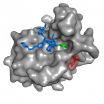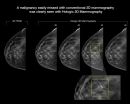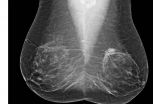(Press-News.org) This news release is available in German.
The FK506-binding protein 51 (FKBP51) is an established risk factor for stress-related psychiatric disorders such as major depression. Drug discovery for FKBP51 has been hampered by the inability to pharmacologically differentiate against the very similar functional counterplayer FKBP52. Scientists at the Max Planck Institute of Psychiatry in Munich have now developed the first potent and highly selective inhibitor of FKBP51. The so-called SAFit-ligand inhibits FKBP51 enhancing growth of neuronal cell cultures and improving stress-coping behavior in mice. These findings provide the structural and functional basis for the development of mechanistically novel antidepressants.
FKBP51 and FKBP52 are proteins which regulate multiple cellular activities. Most importantly in the context of psychiatric diseases, they interact in an antagonistic manner with receptors for stress hormones in the brain. FKBP51 inhibits while FKBP52 enhances the activity of the glucocorticoid receptor, thus playing a major role in the regulation of stress responses.
For the first time, scientists around Felix Hausch, Project Group Leader at the Max Planck Institute of Psychiatry and lecturer at the Ludwig-Maximilians-University in Munich, developed highly selective inhibitors of FKBP51 by an induced-fit mechanism. "We initially used a chemical genetics approach and then, step by step, improved the fitting of our inhibitors," describes Steffen Gaali, post-doctoral student in the project group of Felix Hausch and first author of the current study. "Finally the most potent ligand SAFit, a selective Antagonist of FKBP51 by induced fit, had a more than 10,000-fold selectivity for FKBP51 over FKBP52." SAFit exactly fits into a pocket of FKBP51 by pushing out one of the protein's amino acid side chains. This conformational change cannot occur in the FKBP52 protein.
In further experiments, the researchers investigated the characteristics and effects of the SAFit-ligand. In cell culture, SAFit potently stimulated the differentiation of neuronal cell lines. Unlike former inhibitors of FKBP51, the new pharmacological agent did not show any immunosuppressive side-effects. Further, SAFit displayed antidepressant-like activity in mice. By inhibiting FKBP51, the protein's inhibitory effect on the glucocorticoid receptor is reduced in the brain. Thus, SAFit enhances the regulation of one of the key stress-coping mechanisms, the HPA axis.
"Depression is likely a biologically heterogeneous disease and a major shortcoming is the inability to match antidepressant agents to the specific underlying biological alterations," explains Felix Hausch. "Patients with FKBP51-hyperinducing gene variants or with a hyperactive HPA axis can be clinically identified by genotyping for FKBP51 and/or the Dex-CRF test." Taken together, by generating the SAFit-inhibitor, the Max Planck scientists provide the proof-of-principle for selective FKBP51 inhibitors as a mechanistically novel treatment for stress-related psychiatric disorders.
Further Information (HPA axis and Dex-CRF test)
The hypothalamic-pituitary-adrenal axis (HPA axis) is a complex set of interactions among the hypothalamus, the pituitary gland and the adrenal glands. The interactions among these organs play a major role in the control of reactions to stress and regulate many processes, including digestion, the immune system, mood or emotions. The stress-induced release of corticotropin-releasing factor (CRF) by the hypothalamus leads to increased cortisol production in the adrenal glands. Cortisol itself facilitates an adaptive phase in which alarm reactions including the immune response are suppressed, allowing the body to attempt countermeasures against the stress.
The activity of the HPA axis can be measured with the Dex-CRF test. The release of cortisol is significantly higher in some groups of depressed patients than in non-depressed controls, indicating hyperactivity of the HPA axis.
INFORMATION:
Original publication:
S. Gaali, A. Kirschner, S. Cuboni, J. Hartmann, C. Kozany, G. Balsevich, C. Namendorf, P. Fernandez-Vizarra, C. Sippel, A.S. Zannas, R. Draenert, E.B. Binder, O.F.X. Almeida, G. Rühter, M. Uhr, M.V. Schmidt, C. Touma, A. Bracher, F. Hausch.
Selective inhibitors for the psychiatric risk factor FKBP51 enabled by an induced-fit mechanism
Nature Chemical Biology, 1 December 2014 | http://dx.doi.org/10.1038/nchembio.1699
Molecular clocks -- based on changes in genetic material -- indicate much younger ages for a wide variety of plants found as fossils in southern Argentina than do the solid, geologic dates of those fossils, according to geoscientists who surveyed recent paleobotanical discoveries in Patagonia.
The finding suggests serious biases in molecular clocks, which are heavily used to date many kinds of living things. It also directly refutes a widely-held idea about how most Southern Hemisphere plant and animal groups attained their current distributions.
Geologists date fossils ...
A team of scientists has revealed how certain harmful bacteria drill into our cells to kill them. Their study shows how bacterial 'nanodrills' assemble themselves on the outer surfaces of our cells, and includes the first movie of how they then punch holes in the cells' outer membranes. The research, published today in the journal eLife, supports the development of new drugs that target this mechanism, which is implicated in serious diseases. The team brings together researchers from UCL, Birkbeck, University of London, the University of Leicester, and Monash University ...
In the city that never sleeps, it's easy to overlook the insects underfoot. But that doesn't mean they're not working hard. A new study from North Carolina State University shows that insects and other arthropods play a significant role in disposing of garbage on the streets of Manhattan.
"We calculate that the arthropods on medians down the Broadway/West St. corridor alone could consume more than 2,100 pounds of discarded junk food, the equivalent of 60,000 hot dogs, every year - assuming they take a break in the winter," says Dr. Elsa Youngsteadt, a research associate ...
ARLINGTON HEIGHTS, Ill. (December 2, 2014) - If you are one of the millions of Americans who experiences a severe allergic reaction to food, latex or an insect sting, you should know the first line of defense in combating the reaction is epinephrine. Unfortunately, not all medical personnel know how important epinephrine is in bringing an allergic reaction under control.
According to new guidelines published in the Annals of Allergy, Asthma and Immunology, the scientific publication of the American College of Allergy, Asthma and Immunology (ACAAI), the fast administration ...
AUSTIN, Texas -- Researchers at The University of Texas at Austin have identified a network of genes that appear to work together in determining alcohol dependence. The findings, which could lead to future treatments and therapies for alcoholics and possibly help doctors screen for alcoholism, are being published this week in the journal Molecular Psychiatry.
By comparing patterns of genetic code from the brain tissue of alcoholics and nonalcoholics, the researchers discovered a particular set of genes co-expressed together in the individuals who had consumed the most ...
CHICAGO - According to a new long-term study, diabetic patients with even mild coronary artery disease face the same relative risk for a heart attack or other major adverse heart events as diabetics with serious single-vessel obstructive disease. Results of the study were presented today at the annual meeting of the Radiological Society of North America (RSNA).
Researchers at the University of British Columbia and St. Paul's Hospital in Vancouver analyzed data from the Coronary CT Angiography Evaluation For Clinical Outcomes: An International Multicenter (CONFIRM) Registry, ...
CHICAGO - A major new study being presented at the annual meeting of the Radiological Society of North America (RSNA) has found that digital breast tomosynthesis, also known as 3-D mammography, has the potential to significantly increase the cancer detection rate in mammography screening of women with dense breasts.
Breasts are considered dense if they have a lot of fibrous or glandular tissue but not much fatty tissue. Research has shown that dense breasts are more likely to develop cancer, a problem compounded by the fact that cancer in dense breasts can be difficult ...
CHICAGO - A study of breast cancers detected with screening mammography found that strong family history and dense breast tissue were commonly absent in women between the ages of 40 and 49 diagnosed with breast cancer. Results of the study were presented today at the annual meeting of the Radiological Society of North America (RSNA).
"Screening recommendations for this age group continue to be debated," said Bonnie N. Joe, M.D., Ph.D., associate professor in residence and chief of women's imaging at University of California, San Francisco (UCSF). "Recent publications ...
CHICAGO - Patients value direct, independent access to their medical exams, according to a new study presented at the annual meeting of the Radiological Society of North America (RSNA).
Fragmentation of health information among physicians, healthcare institutions or practices, and inefficient exchange of test results can decrease quality of care and contribute to high medical costs. Improving communications and giving patients more control over their care are critical goals of health IT initiatives.
"Easy and timely electronic access to an online unified source of ...
Disparities in mental-health treatment are known to be associated with patients' racial and ethnic backgrounds. Now, a large study by researchers with UC Davis has found one possible reason for those disparities: Some racial and ethnic minorities are less likely to be assessed and referred for treatment by their medical providers.
The study of more than 9,000 diverse individuals, including Latinos, African-Americans, Asian-Americans and non-Hispanic whites, found that patients of different racial and ethnic backgrounds reported experiencing differing treatment approaches ...



